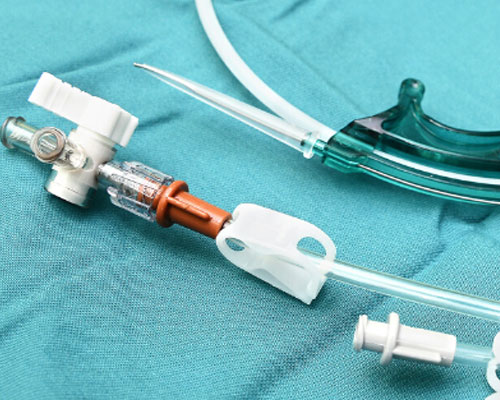How to Test Multi-Lumen Catheters for Leaks and Blockages

Market Requirement:
Multi-lumen catheters are used in a multitude of minimally invasive clinical procedures.
This type of catheter has a single tube with multiple internal pathways/lumens (tubes within a tube) isolated from one another. It permits external access of media to each lumen individually, typically without cross-contact with any other pathway inside the catheter. Often these are used for exchange of blood or to permit drug/solution delivery within the vasculature of the patient.
Most catheters are tested after final assembly: they are tipped and have skived holes cut radially on the outside diameter of the multi-lumen shaft at the distal end of the catheter. Others are tested prior to finishing when untipped and before any skived holes have been cut.
Leak testing either configuration requires a two-step process to first find leaks and then determine whether there are blockages. This application note provides an example of a test process to achieve 100% testing of parts in production.
CTS Solution:
The most common test method is dry compressed air or nitrogen pressure decay leak testing and either mass flow or pressure decay for blockage. The single-channel Sentinel Blackbelt with 2, 3 or 4 sequential ports are designed for this purpose. Most multi-lumen catheters require testing at pressures ranging from 5 psig to 200 psig.
Contact CTS
To Discuss Your Leak Detection System Requirements
Contact CTS
Contact Cincinnati Test Systems to learn more about our leak detection equipment
Contact UsCustomer Login
An account is needed to view restricted documents such as user manuals and to submit RFQ requests.
Sign In